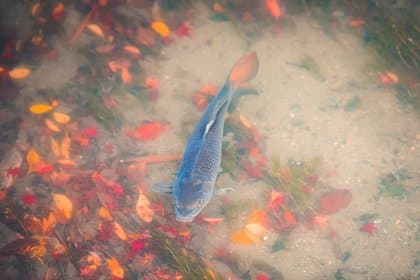Anonymous
This could be life changing for our native fish species
The Daughterless Carp Project is a cutting-edge solution for controlling the proliferation of carp, an invasive species that is causing significant harm to aquatic ecosystems. By using genetic engineering techniques, the goal of the project is to produce a population of carp that are unable to reproduce, thus reducing the number of carp in the wild over time.

Carp are an invasive species that have caused significant ecological and economic damage in many countries, including Australia, the United States, and New Zealand. To address this issue, scientists have developed the Daughterless Carp Project, a cutting-edge initiative aimed at controlling carp populations in a sustainable and humane manner.
Carp are voracious feeders that consume large quantities of native vegetation, reducing the habitat available for native species. In addition, they produce large amounts of waste, which can lead to poor water quality and reduced oxygen levels, affecting the health of aquatic ecosystems.
Traditionally, carp populations have been controlled through fishing and the use of chemicals, such as rotenone. These methods can be effective in the short term, but they also have significant drawbacks, including high costs and potential harm to non-target species. The Daughterless Carp Project offers a more sustainable and humane solution, as the populations will decline over time without the need for ongoing management.
The Daughterless Carp Project uses genetic engineering to produce male-only populations of carp. This approach is based on the idea that the carp populations will decline over time as there will be no females to lay eggs. The genetic engineering is achieved by inserting a dominant male-only gene into the carp population.
The Daughterless Carp Project is still in the early stages of development, but the potential implications are significant. With further research and development, the project has the potential to be applied to other invasive species, providing a tool for managing populations and preserving biodiversity. In addition, the project has the potential to be used in other industries, such as agriculture, where the control of pests and invasive species is a critical issue.
There are a number of challenges that must be addressed in order to ensure the successful implementation of the Daughterless Carp Project. One of the main challenges is the potential for the release of genetically modified carp into the environment to have unintended consequences, such as the interbreeding with wild populations and the reduction of genetic diversity of native populations. Another challenge is the social and ethical concerns surrounding the use of genetic engineering, which can be addressed through transparent and scientifically sound information and engagement with stakeholders.
To ensure the success of the Daughterless Carp Project, ongoing monitoring and research is essential. Monitoring is necessary to assess the effectiveness of the project in controlling carp populations and to ensure that there are no unintended consequences. Research is needed to continue to develop the technology and to identify any potential risks or unintended consequences associated with its use.
In conclusion, the Daughterless Carp Project holds significant promise for controlling carp populations and preserving aquatic ecosystems. With continued collaboration between scientists, stakeholders, and the community, the Daughterless Carp Project has the potential to make a significant contribution to the management of invasive species and the preservation of biodiversity.
Anonymous
This could be life changing for our native fish species
Sign up for our newsletter and stay up-to-date on the latest tips, tricks, and techniques in carp fishing. From beginner to expert, our newsletter offers something for every level of angler. Do not miss out on exclusive content, product reviews and fishing reports that will help you catch more carp.





